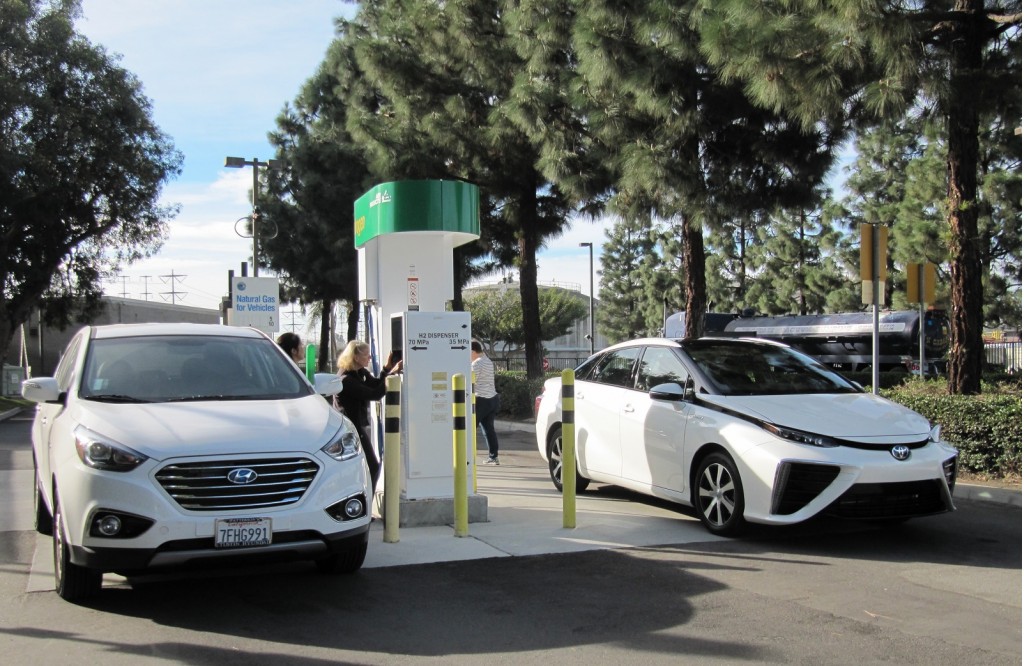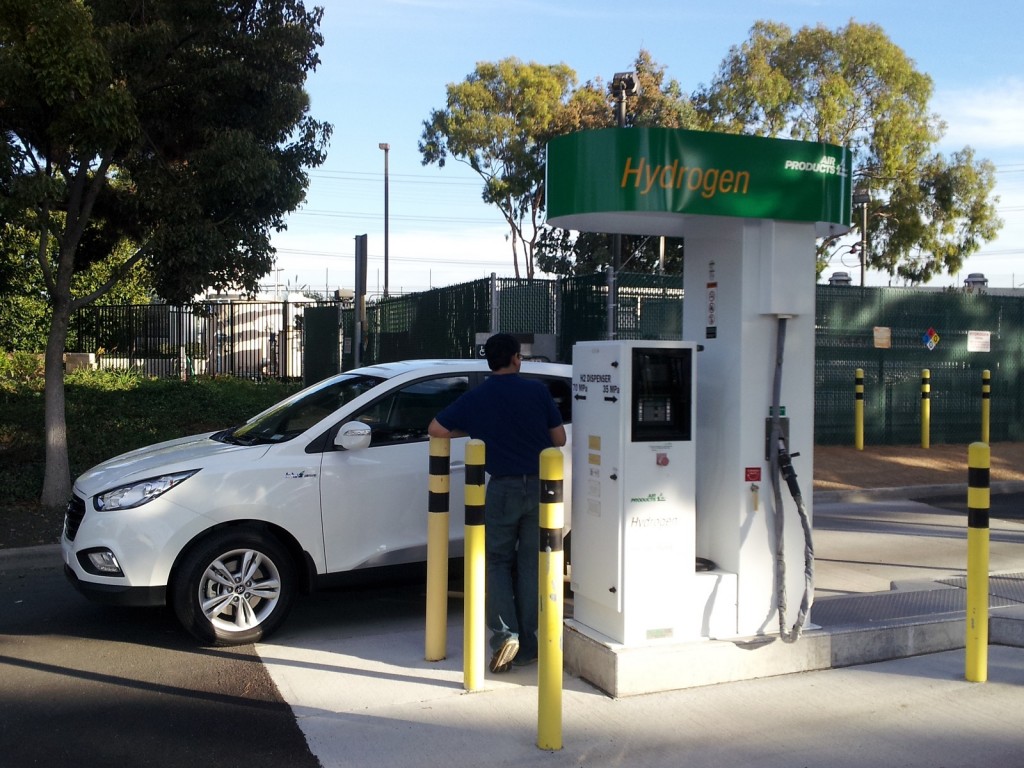As hydrogen fuel-cell cars slowly become a more significant presence in a few parts of the U.S., more consideration is being given to the fueling infrastructure they use.
Carmakers like to tout the quickness of refueling hydrogen cars, which roughly matches that of gasoline cars.
But that won't matter without a sufficient network of fueling stations that are as easy to use and reliable as gas stations.
DON'T MISS: Gas, Electricity, Hydrogen: How Many Cars Can 'Fuel' And What Will It Cost? (Aug 2015)
That means matching the "throughput" of gas stations, or the number of vehicles that can be refueled in a given amount of time.
Most hydrogen fueling stations in operation today can't store and deliver enough hydrogen to achieve the throughput of gasoline pumps at thousands of high-traffic gas stations.
A company called H2 Logic hopes to change that with a station it claims can triple fueling capacity, while reducing footprint by one third, according to Green Car Congress.

2015 Hyundai Tucson Fuel Cell, 2016 Toyota Mirai at hydrogen fueling station, Fountain Valley, CA
H2 Logic's CAR-200 dispenser is smaller than previous designs, and can dispense hydrogen through a single fueling hose at a peak rate of 100 kilograms in 3 hours.
With sufficient onsite storage, H2 Logic claims that a station using CAR-200 dispensers can provide up to 200 kg of hydrogen per day.
The 2016 Toyota Mirai sedan now on sale in parts of California has a stated capacity of 5 kg of hydrogen, and a rated range of 312 miles.
ALSO SEE: Hydrogen Stations In California: How Many Needed As Fuel-Cell Cars Arrive? (Jan 2015)
For comparison, the California Air Resources Board says stations being constructed now with state funds will have a maximum capacity of 180 kg of hydrogen per day.
That means the new H2 Logic station could theoretically boost throughput from 36 Toyota Mirai sedans a day to complete fill-ups for 40.
This an improvement, although still not enough to match the maximum capacity of a typical modern gas pump, at up to 10 cars an hour indefinitely as long as the fuel is there.

2015 Hyundai Tucson Fuel Cell at hydrogen fueling station, Fountain Valley, CA
Granted, the vast majority of gas stations actually run at no more than 5 percent of their theoretical maximum throughput—or fewer than 100 cars a day.
Yet hydrogen stations cost significantly more to construct than even multi-bay gas stations, so operators are under more pressure to maximize throughput in order to recover capital costs.
MORE: How Many Hydrogen Cars For Northeast U.S.? 10,000 In 10 Years, Plan Says (Feb 2015)
Right now, much of the construction cost of new hydrogen fueling stations is covered by government funds, but that's not likely to last indefinitely.
So analyzing throughput remains important in determining the viability of such fueling stations to become private, profit-making businesses.
[hat tip: Dries V]
_______________________________________________












